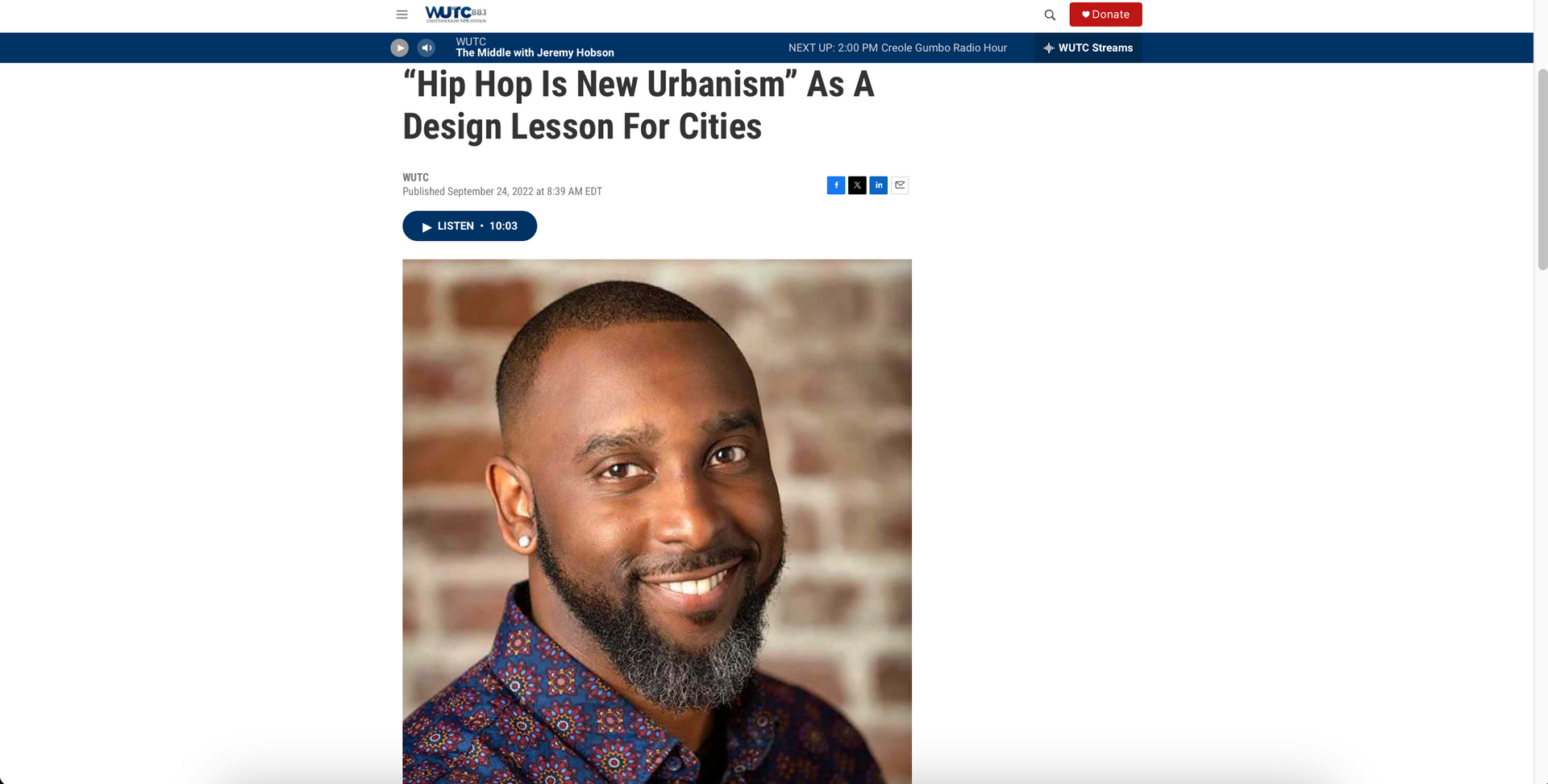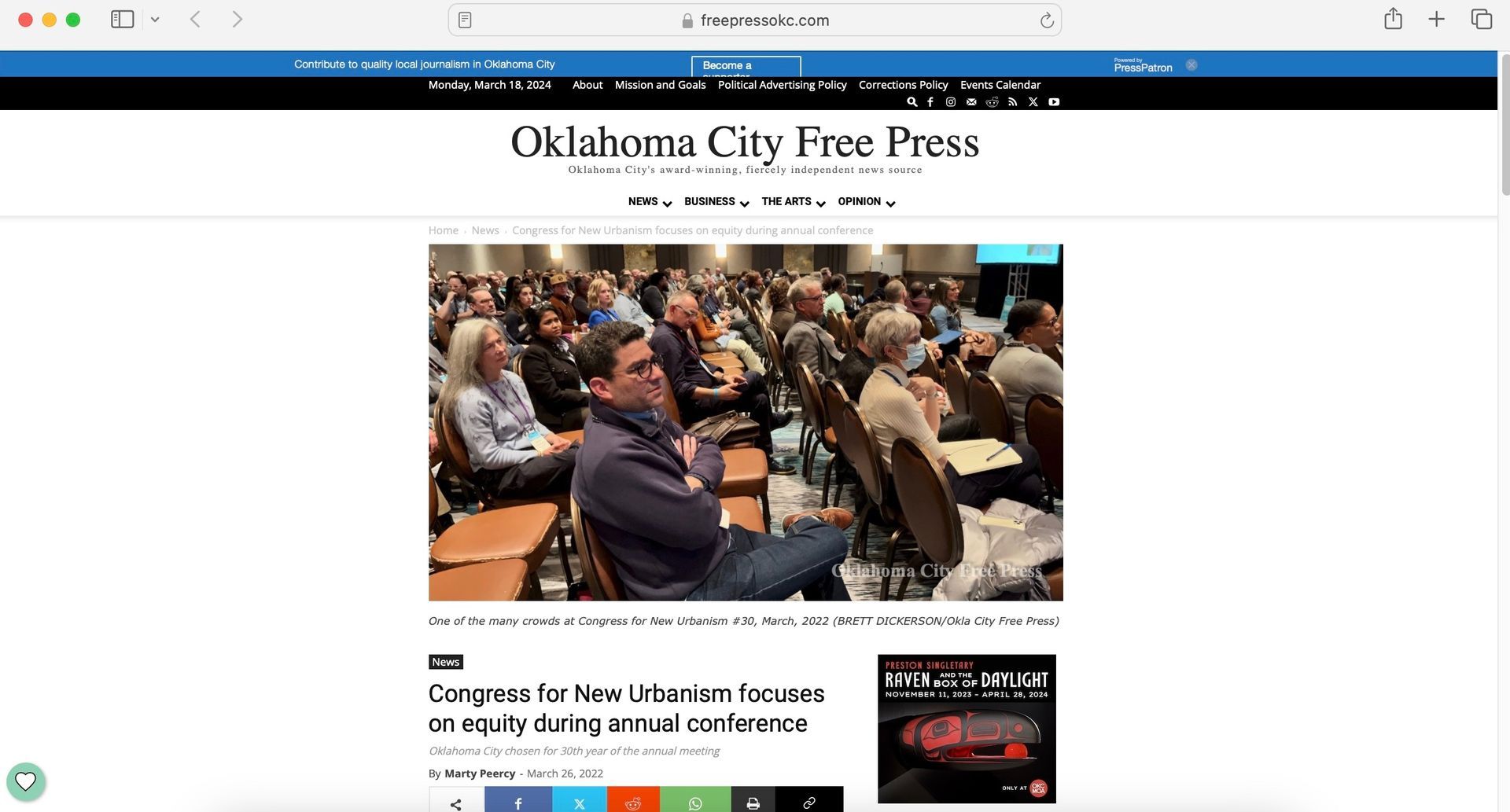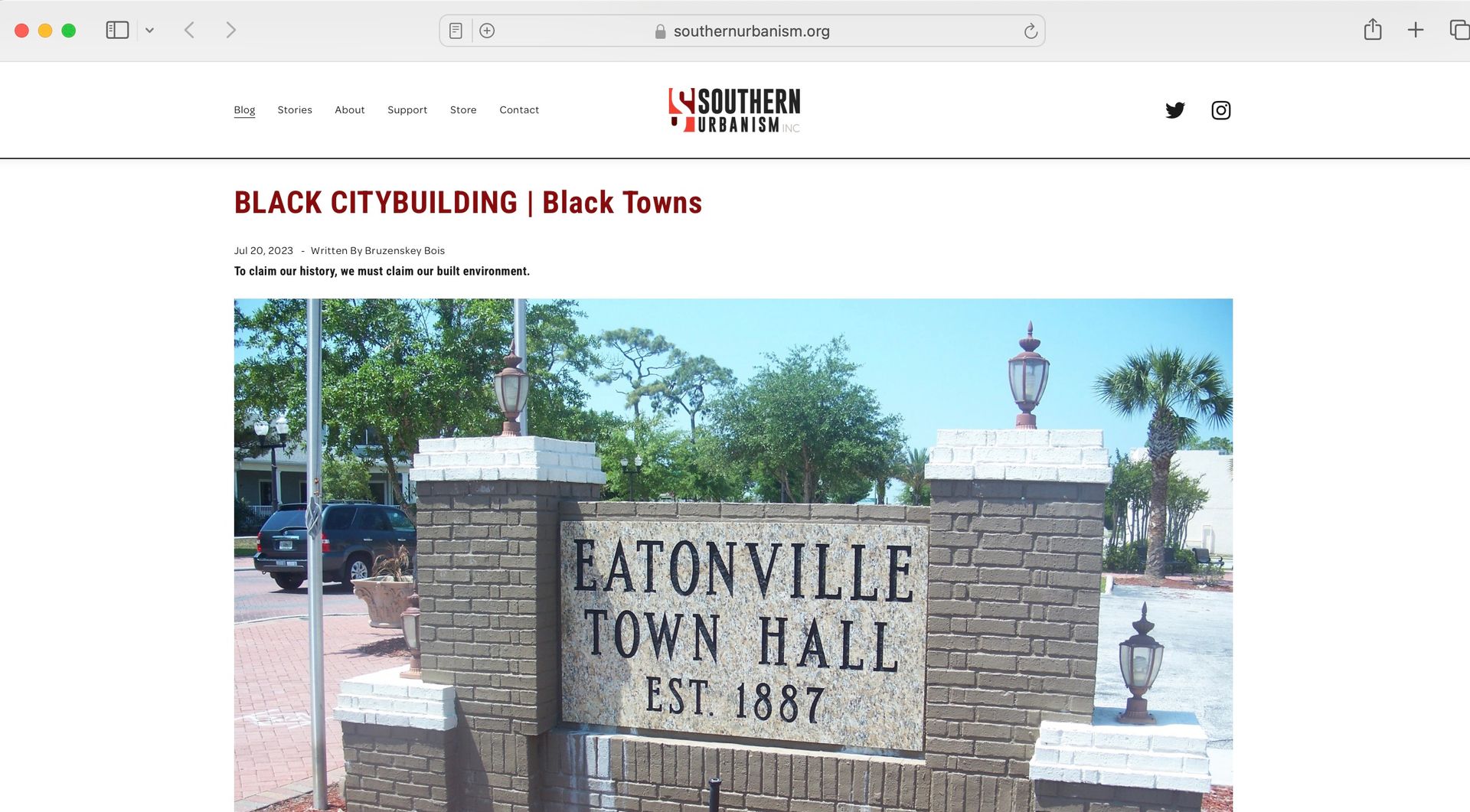MEDIA
CITYBUILDING | Black Citybuilding
If we look around, the link between the built environment and racial equity is clear. One night, I was driving through what was one of Tampa’s historic Black neighborhoods. I could see the bones and structure of where a Black community used to thrive. Commercial buildings came up to the sidewalk. Every structure had large windows facing the street. I thought to myself, “It would be nice to see patrons walking on these sidewalks again, going from business to business. But how safe would they feel with me driving past on this three-lane, one-way road going 50 miles per hour?” And not only that—as a driver, I wouldn’t even have a chance to notice the businesses I was passing. I could try to pay more attention to them, but at that speed, it wouldn’t be safe. “No way businesses in this neighborhood can flourish with this setup,” I thought. I imagined what the local economy would be like if that road went away. The ideas of community, opportunity, beauty, and pride were absolutely applicable to the neighborhoods I knew. But in those neighborhoods, those ideas couldn’t survive. That’s why I started the Black Caucus.
BLACK CITYBUILDING | Black Towns
In 1887, the tiny town of Eatonville, Florida, was incorporated as one of the first all-Black municipalities in the United States. Over time, it grew in importance if not size. It gave its residents power, dignity, and community. It was the home of famed Harlem Renaissance author Zora Neale Hurston. It contained a preparatory school for Black children founded with the help of Booker T. Washington. Today, an interstate runs through the middle of its 1.6-square-mile footprint. That school no longer exists, its plot of land now slated for a development that local citizens feel disconnected from. The history of Eatonville is storied, but its fate is uncertain. And it isn’t alone—countless Black towns have suffered similar or worse fates. Still, there are steps we can take to preserve both our history and the cities that reflect it.
National Geographic
Rare 1920s Footage: All-Black Towns Living the American Dream | National Geographic
(I don't own the rights to this video)
Administration, Black Resilience Network Highlight Importance of Faith-Based and Neighborhood Partnerships at Climate Resilience Roundtable
March 10, 2023
By Homeland Security Today
Last week, FEMA joined the White House Office of Faith-Based and Neighborhood Partnerships, the Black Resilience Network and others to discuss efforts to reinforce climate resilience.
The roundtable discussion brought together Black faith-based and community organizations and partners from private and philanthropic sectors, sharing tools and resources to strengthen a whole-of-community approach to climate resilience.
“FEMA cannot address the climate emergency alone. It requires a whole-of-government approach and whole-of-community involvement,” said DHS Center Director Marcus Coleman. “Preparing our communities for a changing world also requires a coalition-driven approach to building climate resilience across the nation, and it will take all of us to do so now.”
The roundtable event included a facilitated discussion led by the Black Resilience Network, a membership community that offers learning and networking experiences focused on racial justice, crisis leadership, and resilience.
May 17, 2021, Updated September 16, 2022
By The Black Wall Street Time | Deon Osborne
Tullahassee, Oklahoma, a historically all-Black town, is making a comeback as Cymone Davis, the city manager, leads a 30-day clean-up initiative to revitalize the community, including restoring historic buildings and clearing roads, with the support of diverse stakeholders and professionals.



